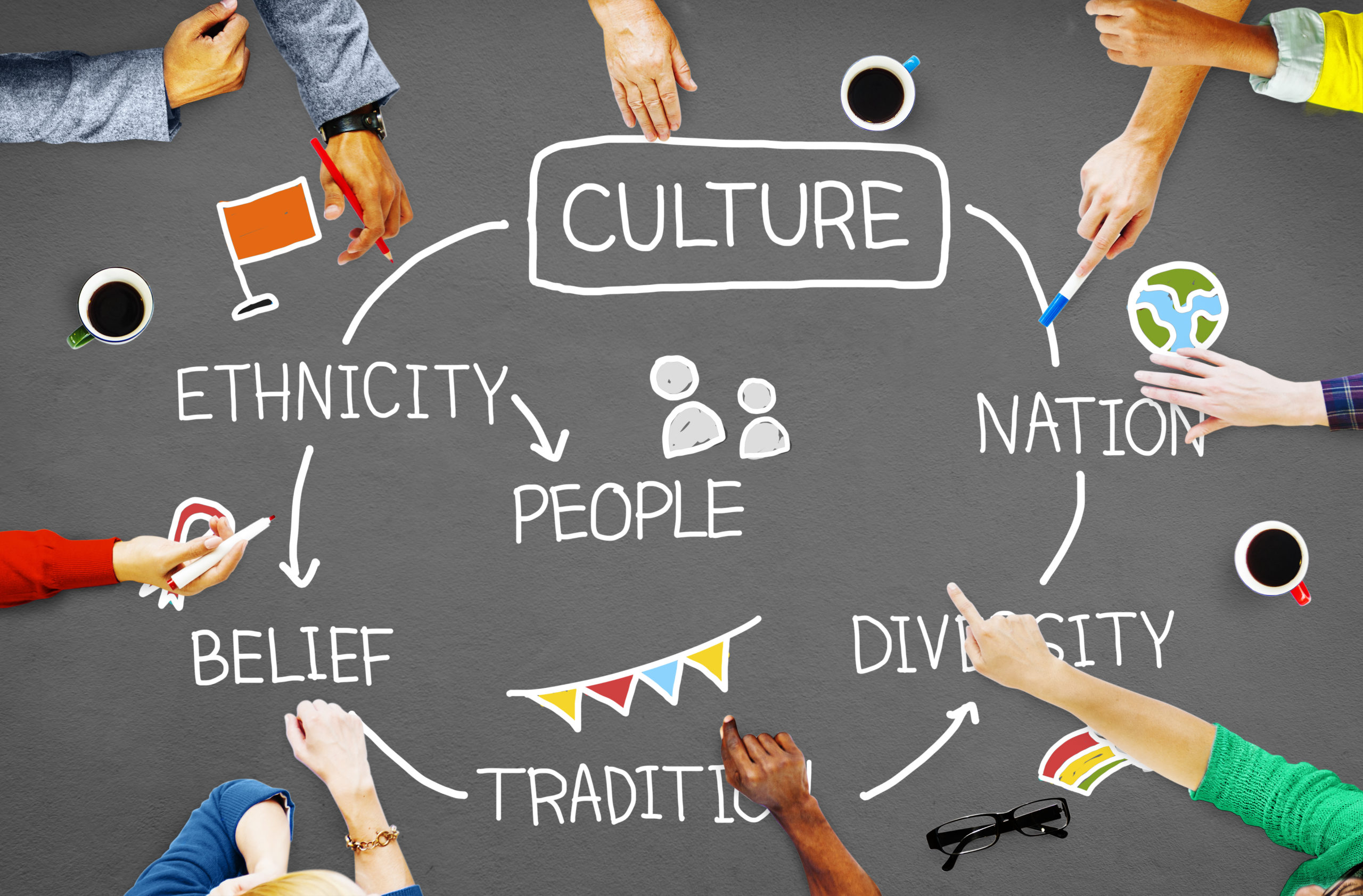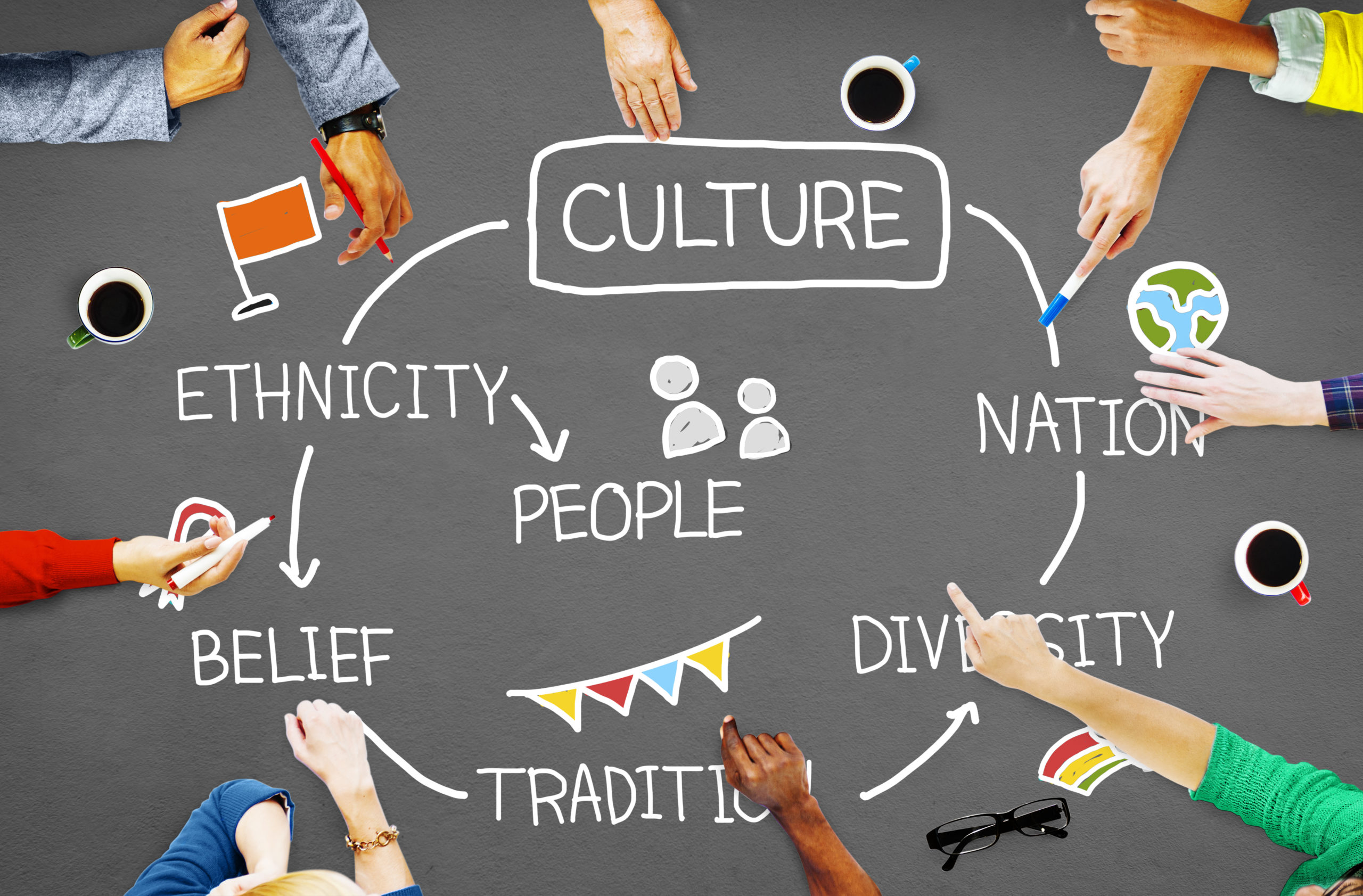Jewish Food, clothes, music, holidays and more!

Food
Some Jewish holidays in Israel are traditionally accompanied by very special meals when families gather together and retell the ancient stories of the land of Israel. The Passover dinner, for example, comes to remind us of the story of Exodus. When Moses lead his nation out of the life of slavery in Egypt, the people had only one night to get prepared for the journey. The dough for the bread patties they were making for the road did not have enough time to rise with the help of yeast. In Passover dinner, Jews still eat flat crispy bread, much like crackers – called matza. Bread especially made for Saturday night dinner is called challah. It is a sweet fluffy white sesame seed topped bun in the form of a braid. Jews, whose ancestors lived in Ethiopia make a spongy sourdough bread called injera. A large flatbread by the name of Lafa, similarly to quesadilla is used to wrap meat, salad, and condiments inside it.
Some families prepare gefilte fish, which is a fish patty dish that originated in Eastern Europe. Descendants of those Jews that lived around North Africa make hearty and spicy food: beef, chicken, fish, and vegetables are always seasoned with hawa’age – a mix of turmeric, cumin, coriander, and black pepper. With some garlic and onion, such traditional stews and soups are healthy and super filling. Beef, chicken, fish, and vegetables require the use of hawa’age, a curry-like spice mixture that consists of turmeric, cumin, coriander and black pepper in proportions that vary from town to town. On top of that, we add fresh garlic, onion, tomatoes, and cilantro to many of our dishes. Hilbeh, a spicy relish made from freshly ground fenugreek, and Schug, a bright green mix of cilantro and chili, are served separately and added to food according to taste. A few meals like this, and you are on your way to a healthy Yemenite life.
Many traditional Israeli dishes are surprisingly sweet. Tzimmes is a stew made of carrots, beans, and sometimes potatoes, with dried fruit like prunes, raisins or pineapple. Another fun dish is ptitim – Israeli pasta, that comes in shapes like tiny pearls, stars, and loops.
Israelis love cooking at home and having dinner in the family circle. But holiday dinners are especially fun, because of all the quirky traditions those dinners have. For example, for the harvest festival dinner called Shavuot, people traditionally only eat dairy food like cheese and yogurt pies, veggie quiches, blintzes, and farmers cheese pastry. After such holiday dinners, people like to stay at the table and sing together out loud.
Israeli food is very diverse because it is inspired by many different cultures. But anywhere in the country, you can get a traditional Israeli sandwich made with pita: it is around bread pocket, which the vendor will heat up, cut open and stuff with all sorts of delicious food combinations. First, he will spread some hummus inside the pita pocket; hummus is a delicious creamy paste made of mashed chickpeas, lemon juice, sesame seeds, and secret spices. Then, you would have to choose the main ingredient for your sandwich. The hot and crispy falafel balls are the most popular choice. These are made of roughly ground chickpeas and fava beans, parsley and spices like cumin and coriander and deep-fried till they are golden brown on the outside, but green and fluffy inside. A crispy chicken cutlet covered in golden breadcrumbs is another popular choice: schnitzel came to Israel from the Austrian kitchen and forever became an all times favorite. Similar to the Greek gyro or Turkish doner kebab, shawarma is another delicious pita filling. Israelis like mixing the shawarma meat with onions into a juicy combo of chicken, beef, lamb, and turkey, all in one. All that is topped with French fries, Israeli salad – finely chopped skinless tomatoes, cucumbers and onions, and anything else you can fit into the pita pocket. That can be the mashed smoky eggplant pulp with mayo, avocado, marinated cabbage or pickles.
CLOTHES
Israel is a very modern country. Israelis like wearing fashionable clothes and shopping in the trendiest stores. Like in any other country, there are also Israelis who are more devoted to the Jewish religion and old traditions. Religious Orthodox boys always wear a small round skullcap on their heads called kippah. Girls only wear skirts and always cover their shoulders. Religious people in Israel are very modest and conservative in their clothing. When praying in the Synagogue, men wear a tallit on their shoulders: this traditional scarf is usually white with colorful stripes and special long fringes tied into many little knots like macramé. Other traditional clothes include long colorful robes with sparkling threads and dangling beads, which you can see people wearing in Arabic countries. You will also see a lot of young Israelis in the olive green army uniform on the streets. That is because all Israelis, boys, and girls, serve in the army.
FESTIVALS, HOLIDAYS, CELEBRATIONS
Since the ancient times, the people of Israel have been using the lunar calendar, in which months, different from those in the Western world, begin their cycle at the end of summer. Because the lunar month is shorter than the solar month, that traditional calendar doesn’t exactly match the Western calendar; Israeli New Year, therefore, can be celebrated as early as August and as late as October. The New Year is called Rosh-Hashanah, which literally means “The Head of the Year”. For Rosh-Hashanah, Israelis always eat lots of apples dipped in honey, hoping that the coming year will be sweet. After Rosh-Hashanah comes Sukkoth, which celebrates the harvest as well as the Biblical story of Moses leading the Jewish exodus out of Egypt. In order to remember how their ancestors spent nights in the temporary shelters while walking from Egypt through the desert, Israelis build wooden cabins with palm tree leaves on top in their backyards and on their balconies, porches, and rooftops. Kids get to decorate the cabins with colorful paper lanterns and fairy lights, which are much like Christmas lights. Then you get to live in the cabin for a whole week and fall asleep while looking at the stars that are peeking through the palm tree leaves. Next fun holiday is Hanukkah, the celebration of light. Hanukkah usually occurs at the same time as Christmas. The best part of this holiday is that kids receive special pocket money from their parents and get to eat delicious oily deep-fried ball-shaped doughnuts called sufganiyot, filled with strawberry or raspberry jelly and topped with powdered sugar. One of the most fun holidays is also Purim. This is the Israeli version of the carnival: everybody gets dressed up in costumes, much like for Halloween, and goes out on the streets with traditional noisemakers and songs. On this holiday, people also traditionally prepare parcels of sweets and goodies, which they give to the poor.
FAMOUS STORIES OR EPICS
All the people in Israel know the stories of the Old Testament. Apart from the famous biblical stories, however, there are many additional texts about holy prophets and great kings, bloody battles and colorful feasts, courageous women and greedy crooks, heavenly miracles and human mistakes. The holiday of Purim, for example, celebrates the story described in Megillat Esther (Biblical Book of Esther). The book tells us about the Babylonian king Ahasuerus, who’s evil prime minister wants to kill all the Jews living in the empire. A beautiful Jewish girl Esther marries the king and, risking her life, asks Ahasuerus to spare her people. Another epic story that didn’t make into the Old Testament is the story of Masada. An ancient fortress, built on the top of a high mountain in the middle of the Negev Desert, Masada was the last resort of the Jewish rebels during their revolt against the Roman Empire. After several months of siege, the Romans managed to build a ramp and get up to the top of the rocky mountain. What they discovered was a murky picture: unwilling to be captured and enslaved, the rebels committed a mass suicide.
CHILDRENS GAME
The most popular game for children of any ages in Israel is a pretty conventional game with glass marbles called gulot. The rules are similar to the marble games in America. Kids draw a circle on the ground and, much like in curling, the goal of the game involves shooting your marbles forward in order to knock your opponent’s marbles out of the circle. Other games include shooting marbles at the wall, getting them into the hole in the ground, and many others. Surely, kids play with marbles all over the world. In Israel, however, every marble also has a special name. Thus, for example, a striped marble is called “drakonit” (because it looks like a dragon), an especially big marble is called “bombila,” while a marble with air bubbles inside is called “gazozit,” which is derived from the word “gas.”
VERBAL AND NON-VERBAL COMMUNICATION
Israelis are generally very talkative. The structure of the colloquial Hebrew language is often very friendly Israelis often call each other “brother” and “sister, “ address their teachers by the first names and openly talk about various personal issues. Israelis also use a lot of big hand gestures, which might seem a bit annoying to a foreigner. One of the most common gestures looks like this: all, or at least three fingers (index, thumb, and middle) are pointing up in a bundle. You shake your hand as if you’re holding something very little, like a grain of sand, in those fingers. This gesture means: “wait a second.” It might seem rude at first when people do that to your face without saying a word. But they never mean to insult you.
VALUES
Religious traditions are very much respected in Israel. You don’t have to be religious and observe all the rules, but some rituals are always performed regardless of one’s religious views. Thus, every boy and girl in Israel celebrates the special 12/13-year-old birthday called Bar-Mitzvah or Bat-Mitzvah by reading a paragraph in Torah, the holy scripture. After that, you usually have a huge party, which celebrates the child’s entering the adulthood.
The army service is also very important to almost every Israeli. Surely, there are those who choose to avoid being drafted. But most Israelis begin regular army service at the age of 18. Army in Israel is not only about combat training. In the army, you can choose to be a teacher, a cook, a designer or a doctor. You can work with computer programs or communication equipment, train dogs, broadcast radio shows or even perform in the military entertainment unit. In the army, many young Israelis acquire useful skills and discipline, as well as strong friendships, which often last forever.
FUN FACTS
Israel is a tiny country: you can cross it lengthwise in approximately 10 hours. But this country also has a very wide climate range. The most northern tip of Israel, called the Golan Heights, is proud of the snowy mount Hermon, which is a major tourist attraction since it doesn’t really snow in Israel during the winter. The southern tip of Israel is on the coast of the warm Red Sea. The average temperature there is about 100 degrees Fahrenheit most of the year.
Israel is also home to the lowest point on the Earth surface (on dry land): The Dead Sea. This unique lake contains such high amounts of salt and minerals in its water, that the consistency of the liquid is drastically different from the regular water. The Dead Sea water is so dense, that it forces your body to stay afloat without trying.
FAMOUS PLACES
The most famous place of all in Israel is its capital, the city of Jerusalem. Every building in Jerusalem is made from limestone, which gives it the famous golden-white glow. The modern city of Jerusalem surrounds the Old City, which holds the spirits of the ancient times within its walls. Many world-famous sites are situated within the walls of the Old City: the gorgeous Church of the Holy Sepulchre. the golden Dome of the Rock, the ancient underground tunnels of the Western Wall, and many other historical places that are literally sitting one atop another on the narrow streets of Old Jerusalem.
Important Note: This article was written by a person who is familiar with Israeli culture based on his or her personal anecdotal observations. Additionally, there are quite a few generalizations to make the article easier to understand for the children. Dino Lingo does not accept any responsibility for errors, omissions or subjectivity in the content of this post.
We are wondering what you know about Israeli culture…Why don’t you tell us what you know by leaving a comment below? (make sure your comment is written in a language that can be understood by small children)

Online Hebrew lessons for kids: dinolingo.com




awsome
🙂
So ?, what overnight. I recently finished reading all of the article content that you positioned here when i must declare that this was initially value shelling out a period of time! Boost bookmarks assist long run articles or blog posts!
its very interesting to read about jewish culture and food and their whole background and reading this article just is fun filling
The rooster and dumplings are completely different, but dangerously addictive, with rice dumplings and
spicy gravy.
well thanks for letting me learn something new
This is freakin awesome オス パーキング
Excellent article…. KUDOS:)